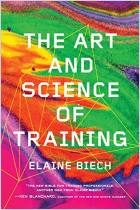Зарегистрируйтесь на getAbstract, чтобы получить доступ к этому краткому изложению.

Зарегистрируйтесь на getAbstract, чтобы получить доступ к этому краткому изложению.
Ruth Colvin Clark and Richard E. Mayer
E-Learning and the Science of Instruction (Fourth Edition)
Proven Guidelines for Consumers and Designers of Multimedia Learning
Pfeiffer, 2016
Что внутри?
Dive into a comprehensive, richly detailed, evidence-based guide to design better e-learning courses and content.
Recommendation
In this step-by-step, highly-detailed guide, learning consultant Ruth Colvin Clark and psychologist Richard E. Mayer teach evidence-based best practices and principles of e-learning design. Some of their points are obvious, such as instructions to combine words with images. However, they also debunk some commonly held learning myths – such as combining words, images and audio – that may impede learning. Clark and Mayer anchor their suggestions in data and include helpful scenarios to guide you.
Summary
About the Authors
Learning consultant, speaker and instructor Ruth Colvin Clark is past president of the International Society for Performance Improvement. Psychology professor Richard E. Mayer earned prestigious awards in educational psychology, including recognition as the world’s most productive researcher in his field.




















Comment on this summary